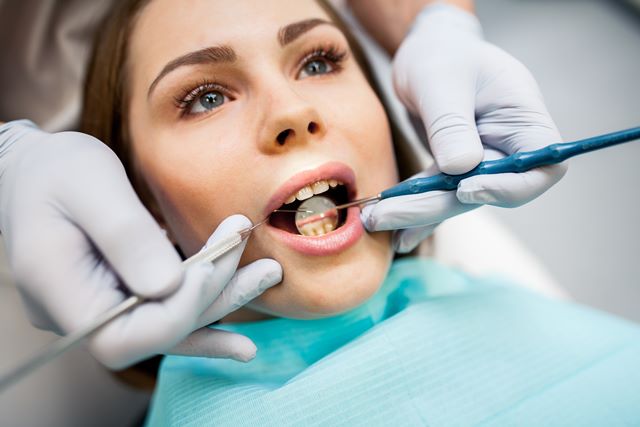
Sometimes referred to as third molars, wisdom teeth typically develop in your mouth between the ages of 17 and 25. However, some never have theirs fully develop. While it’s possible to experience no issues when your wisdom teeth come in, sometimes they can grow in impacted – meaning they don’t come through all the way and are only partially protruding from the gums. They don’t have enough room to erupt fully and normally.
When wisdom teeth erupt through sensitive gum tissue, it can cause intense pain for people experiencing the growth and impaction. Some patients with small mouths must have these teeth removed to avoid further tooth, gum, and facial bone damage. Because they have to grow in, your existing teeth have to shift in order to create space for them, which can cause a change in the bite.
Not only could you potentially experience oral damage, but you can experience headaches, chewing difficulties, teeth grinding, inflammation, swelling, bleeding, and excess saliva. For some patients, the pain is too much to bear, and it requires removal of the wisdom teeth. It is a normal process and is followed by a short-term recovery process. But the benefits are life-long.
In addition to the aforementioned complications, impacted third molars can develop into more serious problems and diseases. There are arguments over whether or not it is valuable to remove asymptomatic wisdom teeth, but there are plenty of arguments in favor of wisdom tooth removal when it becomes painful. Here are five important reasons:
- Inflammation and infection – Because oral space is limited and the occurrence of partial impactions, the eruption of wisdom teeth and can lead to gum inflammation. This, in turn, leads to painful gum disease and other health hazards. According to recent studies, once inflammation develops, it’s very difficult to alleviate it, thereby causing it to spread to surrounding areas as well. Additionally, a partially impacted tooth can eventually cause a separation between the tooth and the gums, which opens the door for bacteria growth. This will dramatically increase the risk of infection.
- 2. Tooth overcrowding – The eruption of wisdom teeth necessitates room to be made for them. A normal mouth is already crowded with teeth, and third molars can be unwelcome guests. Neighboring teeth get pushed aside to accommodate them and your whole mouth could run afoul of alignment – even if you have already had them set in place by braces. It could potentially unravel years of dental work.
- Tooth damage – Related to overcrowding, wisdom teeth do more than just invade their space. The closest teeth are your second molars, and these can be severely damaged by the third molars, which could contribute to bone loss and cavities.
- Cyst or tumor development – On top of the potential damage, impacted wisdom teeth can lead to small tumors or cysts in the jawbone. This will eventually lead to joint pain in the jaw and associated muscles, requiring the assistance of a TMJ specialist and a variety of treatment options.
- Cleaning difficulties – Pain due to complications from impacted wisdom teeth can also mean a risk to your dental hygiene. Because overcrowding occurs and space is at a minimum, being able to properly brush, floss, and clean your teeth makes it difficult. Because areas of your teeth will be hard to reach, those areas of the mouth become prime targets for cavities and plaque buildup.
If you have been experiencing complications with impacted wisdom teeth or are concerned that future pain will develop as you get older, it’s important to speak to your dental practitioner or oral care surgeon about having your wisdom teeth removed. If you’re not sure where to go or who to speak to, you can visit the best dentist in Hamilton who provides information and services for wisdom tooth extraction, along with several other dental maintenances and oral care services.
About The Author:
Stacey Smith is the freelance health writer. She is passionate to write about women’s health, dental health, diabetes, endocrinology and nutrition and provide in-depth features on the latest in health news for medical clinics and health magazines.




